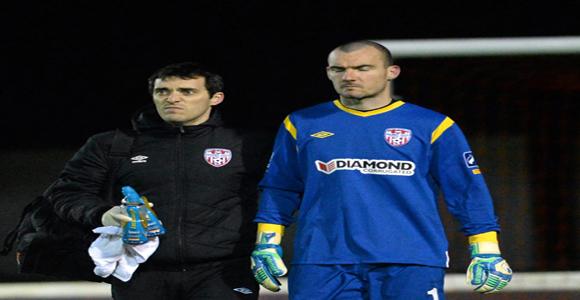Concussion awareness
The following guidelines have been issued by the Football Association of Ireland regarding concussion. We would like all players to make themselves aware of these guidelines -
Football Association of Ireland: Summary Concussion Guidelines issued in September 2014
*
Concussion can be defined as a brain injury that arises from trauma to the head, neck or through an impulsive force to the head from elsewhere in the body
Concussion results in a disturbance of brain function and should be treated as a serious and significant injury with potentially fatal consequences
ANY PLAYER WITH A CONCUSSION OR A SUSPECTED CONCUSSION SHOULD BE REMOVED FROM THE FIELD OF PLAY IMMEDIATELY AND SAFELY AND SHOULD NOT RETURN TO PLAY, TRAINING OR OTHER PHYSICAL ACTIVITY ON THE SAME DAY
A player does not need to lose consciousness to be concussed
The onset of symptoms can occur over minutes but can be delayed for hours
The common symptoms of concussion include headache, dizziness, memory loss, disturbance of balance
All coaches, parents, referees should familiarise themselves with the pocket concussion recognition tool to assist in identifying concussion
All doctors, physiotherapists and paramedics should familiarise themselves with the pocket concussion recognition tool and with SCAT 3 and Child- Scat 3 to assist in identifying concussions
Most concussions (80-90%) resolve over a 7-10 day period but may persist for considerably longer
It is very important to note that the symptoms of concussion in children and adolescents can be prolonged and can in certain circumstances last for weeks or months
Concussed players should not be left alone
Concussed players should not drive, should not take alcohol and should be escorted home
Players who suffer a concussion should consult with their medical practitioner before returning to play
The successful management of concussion is best achieved through physical and mental rest
Medical clearance is necessary in all players who suffer a concussion before they can return to play
There should be a graded return to training activity
Children and adolescents should not return to any activity until they have made a successful return to school/college
Return to play guidelines follows a stepwise approach outlined below
Stages:
1. No activity – symptom limited physical and cognitive rest. Recovery is the objective
2. Light aerobic activity – walking, swimming, stationary bike. Increase in heart rate is the objective
3. Sport specific exercise – running drills. The objective is to add movements
4. Non-contact drills – passing drills. The objective is to exercise, add coordination and cognitive load
5. Full contact practice – This should be medically cleared. The objective is to restore confidence and assess functional skills by coaching staff
6. Return to play
NOTE: Progression through each stage is contingent upon the player being asymptomatic at each level before moving on to the next stage

